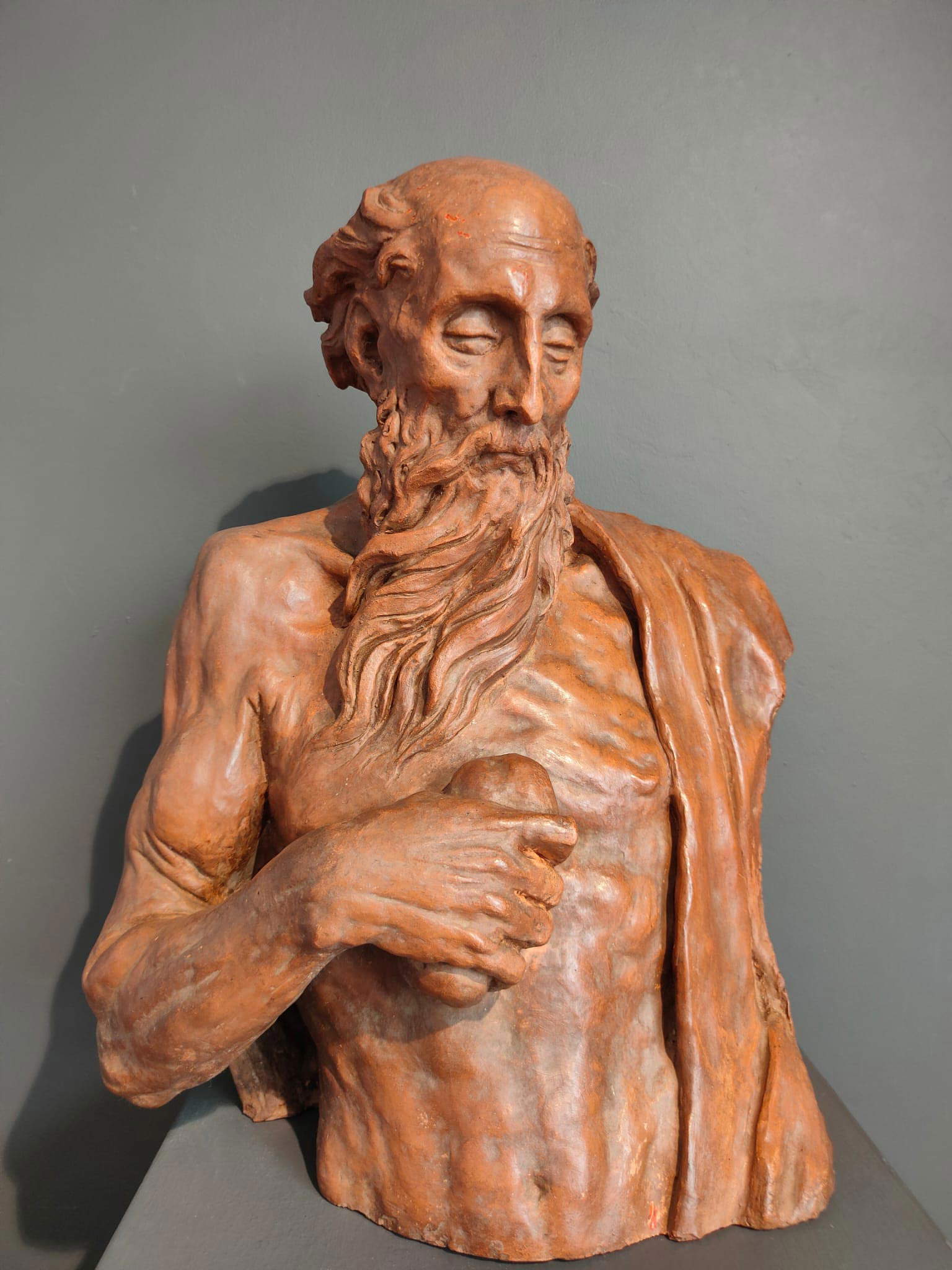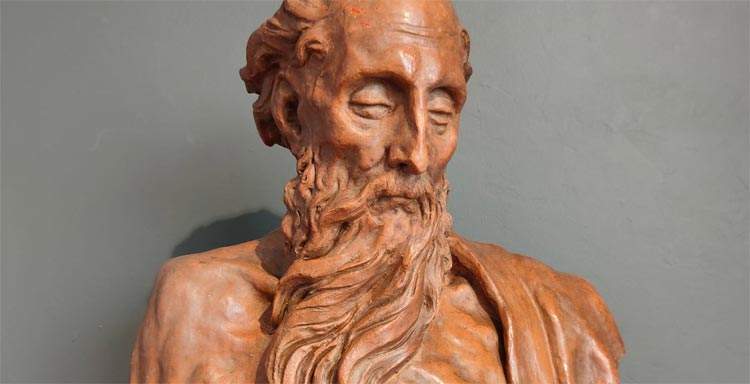Important discovery in Romagna: in Bagnara di Romagna (Ravenna), an antiquarian has in fact found an unpublished sculpture by Alfonso Lombardi (Ferrara, c. 1497-Bologna, 1537), the leading 16th-century sculptor in Ferrara, also known as “Alfonso Cittadella” or “Alfonso da Ferrara,” whom a legend widespread in the19th century has him praised even by Michelangelo (according to whom he was “marvelous in his work that the earth trembled under his hands in obedience to him”), criticized and praised by Giorgio Vasari, who did not appreciate him on a human level because of his temperament judged frivolous and vain, but admired his works.
The work discovered, and now on the art market, is a Penitent Saint Jerome in clay and terracotta, 48 centimeters in height: it is currently in Spilamberto (Modena), and was found by an antiquarian in Villa Morsiani, a 15th-century residence in Bagnara di Romagna. A peculiar curiosity: in April 1993 (so exactly 30 years ago years ago) a famous international furniture, design and architecture magazine, in a feature dedicated to the historic Romagna mansion, in a photographic sequence of the interiors also took up Lombardi’s sculpture, without identifying its author and believing it to be an 18th-century sculpture.

Art historian David Lucidi, author of a specific 2018 monograph and an expert who presented Lombardi’s Salvator Mundi at the Tefaf in Maastricht, recently explained in Spilamberto itself (at the antiquarian gallery ’Ossimoro’) that the rediscovered Saint Jerome shows obvious parallels with other Lombardi masterpieces contained, in particular, in the church of San Petronio in Castel Bolognese. Here, an entirely similar figure of the saint is presented full-length. By contrast, the one rediscovered at Villa Morsiani is a half-length, lacking the left arm that is thought to hold a crucifix, while in his right hand he holds a stone.
“This St. Jerome,” Lucidi said, “may have originally been the upper part of a full-length statue or was a figure of a saint encased in a niche, or even composed a frieze of saints in a large terracotta altarpiece.” What is certain is that fast and dynamic manner of modeling shows the hand of the author. Another Saint Jerome hermit and penitent in the desert is preserved in Faenza at the Pinacoteca Nazionale.
Lombardi also worked for a long time in Bologna. His is, among other things, the famous Lamentation over the Dead Christ group in St. Peter’s Cathedral; his is the monumental Hercules in the Palazzo degli Anziani. In Ferrara Lombardi’s first attestation is documented in May 1517 with his involvement in the decoration of the palace on the river island of Belvedere, also known as “il Boschetto,” (present-day railway station area) formerly a military surveillance area transformed by Alfonso I into a princely architectural and naturalistic space. The author is also involved in the most representative building site of the time, the extension of Alfonso I’s residence in Via Coperta where he is engaged alongside important artists, including Dossi Dossi.
“What emerges is the profile,” Lucidi concludes, “of an artist who, not yet 20 years old, following the death of Antonio Lombardo in 1516 had assumed a leading role in the Este building sites, this also by virtue of his skill, celebrated by Vasari, in the art of wax and terracotta modeling applied to the practice of naturalistic portraiture and medallic work inspired by antiquity.”
 |
| Romagna, unpublished sculpture by Alfonso Lombardi discovered |
Warning: the translation into English of the original Italian article was created using automatic tools. We undertake to review all articles, but we do not guarantee the total absence of inaccuracies in the translation due to the program. You can find the original by clicking on the ITA button. If you find any mistake,please contact us.